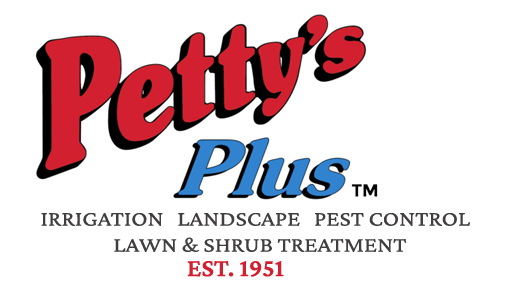East Texas may not often experience the extreme winter weather common in the far northern states, but it does get cold enough to freeze. That means it can kill or damage some outdoor plants if they’re not protected. There are a number of things you can do to get your winter landscaping ready to survive the cold conditions and prepare them to thrive in the Spring.
Move Potted Plants Indoors
If you have some plants outdoors, but they’re in pots (so you can relocate them, as needed), move them into a warmer area. If you can bring them into your house, that’s often a good place. If not, a greenhouse or even the garage might give them the few degrees of additional warmth they need to survive the Winter.
Water, Water, Everywhere
It might seem odd to get something wet right before a freeze, but this can actually help your yard’s plants. Tracy Smith, retail sales manager at Petty’s Irrigation, Landscape and Pest Control, says, “Before it gets to the coldest part of the night, water potted plants and landscaping thoroughly and heavily,” he said. “This insulates the roots.”
Cover Vulnerable Shrubs and Plants
Have you ever seen a yard where the outdoor shrubs and small trees are all wrapped tightly in plastic for the Winter? Maybe the yard looks like it has a bunch of oversized lollipops sticking out of the ground? While the intent is good, that’s actually not the best way to cover and protect your vulnerable shrubs and other outdoor plants from freezing weather.
It’s not like putting on your coat before you go outside – you’re not providing warmth by insulating your plants with the cover. You’re retaining warmth by slowing down the speed at which the plant cools when it is exposed to the clear sky.
First of all, the covering should not be wrapped tightly around the base of the plant or tree. You’re trying to keep your plant warmer, but wrapping that way just blocks the extra heat which would otherwise provide some warmth as it rises from the ground each day.
Instead, you want to drape the cover more loosely over the plant, maybe holding it down with some rocks or bricks – and perhaps even adding a heat source like an incandescent light bulb, depending on the plant and the expected overnight temperature. A cool LED bulb will provide light, but no warmth.
Second, don’t use plastic for the cover. As Tracy Smith notes, “Never use plastic. When the sun comes out, it will increase the temperature of the plants and possibly burn them.” Use sheets, or other textiles like painters’ cloth. There is even some “frost blanket” material available commercially in varying densities, if you prefer that.
Winterize Your Yard Equipment
Drain your hoses and sprinklers, and put them away. Don’t leave them out and exposed to freezing temperatures, or you may have an unpleasant surprise come springtime.
Follow the directions to prepare your specific lawn mower for it’s “off season.” They’re likely available online with a simple search for your brand and model. You may need to drain the fluids and/or include some stabilizer in the gas tank. Check the filters and spark plug and clean the deck. If the blade needs sharpening or the mower needs any other maintenance, why not get it done now when you don’t need to use it?
Prepare Your Spring Planting Areas Ahead of Time
If you have some vegetable and flower beds you plan to use for planting annuals in the Spring, get a head start on them now. Loosen up the compacted soil, mix in plenty of compost and then cover it all with a good layer of mulch. It will be easier to plant after the Winter has ended – and the soil will be ready when you are.
At Petty’s Irrigation, Landscape and Pest Control, we’ve been helping East Texans with their yards since the 1950s. We’ve seen a few winters since then. We can help you by designing (or redesigning) your landscaping to minimize the effects of winter weather. You want your yard to look good and so do we. Contact us at 800-258-9184 or info@pettys.com and let’s find out how we can help you.
